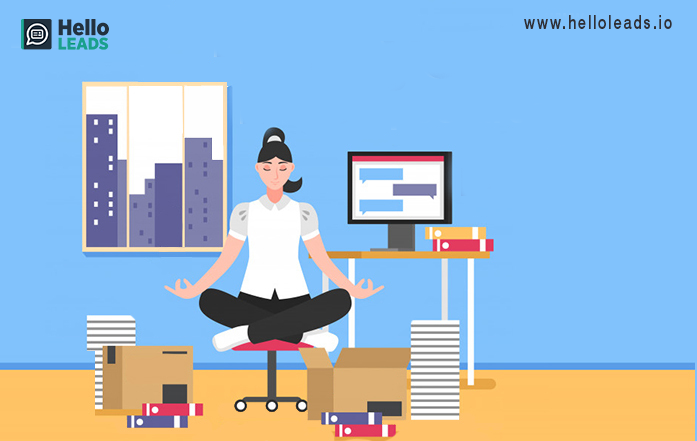
In today’s modern digital world, a numerous number of jobs require sitting for long periods of time while doing office work all day. Most of the office workers spend an average of 10 hours a day sitting in front of a computer, which gives them very little opportunity for physical activity throughout the day. On having multiple works like project deadlines, team meetings, it is very hard to manage things and be productive. With so much to do, your energy and attention are scattered. As a result, many office workers commonly deal with neck and back pain and poor blood circulation.
Yoga in the Workplace
Researchers have found that employees who exercised before or during work hours were better equipped to handle whatever challenges they had to face that day. Yoga at workplace can improve mental and physical health of employees.
Many companies around the world, started implementing employee wellness programs to promote health awareness among their employees. Yoga is increasingly finding its way into the workplace which companies are starting to include in their company’s wellness programs. With increasing health benefits, Yoga has been gaining importance in workplaces.
A study has shown that employee who practice Yoga are more productive and can manage stressful situations more effectively.
Here is a list of 10 best Yoga poses to control your mind and body that will also improve your productivity.
1. Wrist and Finger Stretch
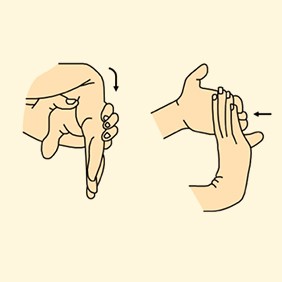
Working on a computer can build up tension in the fingers, hands and wrists which causes the risk of carpal tunnel syndrome. So, these exercises should be done often throughout the day to increase the blood flow.
Yoga: Take your right hand with your left and pull it down towards the ground. Hold for few seconds. Then take the fingertips of right hand into the palm of your other hand. Then switch hands and repeat.
Benefits: You will get some relief on your fingers and work in a relaxed way.
2. Seated Tadasana Mountain Pose
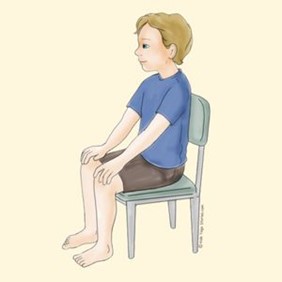
When you continuously sit at a desk for nearly 8 – 10 hours, it results in back pain.
Yoga: Keep your spine in good alignment with head, neck and spine in one line. Tuck your chin in a bit and gently lift shoulders up, back and down the back. Keep knees in front of hips with your ankles under knees and all ten toes facing forward.
Benefits: It strengthens all your core muscles and provides relief from back pain.
3. Seated Side Stretch
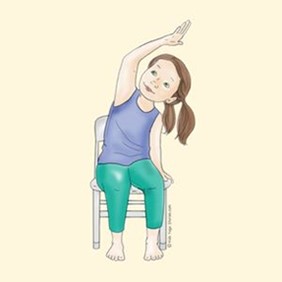
Continuous work on a system can cause pain in the muscles between the ribs.
Yoga: Continue yoga from tadasana, extend your right arm toward the left side of your body, finding as much length as possible from right hip to right armpit. Palm can face to the left, and gaze can shift up toward your bicep if that feels okay on your neck. Create space between your shoulders and ears.
Benefits: The seated side stretch yoga strengthens the muscles between the ribs (intercostal muscles), which helps to support the ribs.
4. Seated Twist
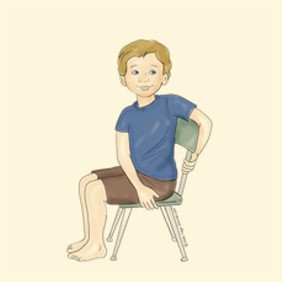
Continuous working on a system for a long time and you don’t have enough time to walk after taking a food resulting in digestive problems.
Yoga: With both knees facing forward, bring your left hand to your outer right knee. Sit up tall and activate your abs. Right hand can rest at your side or down by your right hip. On every inhale, sit up a little taller, and on every exhale, move your right shoulder back an inch as left shoulder moves forward. Pull your left hip back as you twist to the right; you want the twist to stay in your lumbar spine. Also, don’t twist too far; you’ll know you’ve overdone it if it is challenging to keep a steady breath and a tall spine.
You can look toward the right, and eventually toward your right shoulder. Breathe here for a couple of counts, then repeat on the other side, toward the left. Turn to the side of your chair. Keep feet on the floor with good alignment through the joints. Lift your arms up to shoulder height keeping your shoulders parallel, and then rotate towards the back of the chair and rest your hands down. Hold for three to five breaths. Repeat on other side.
Benefits: This seated twist yoga promotes good posture, stimulates circulation and aids digestion.
5. Seated Pigeon (Seated Kapotasana)
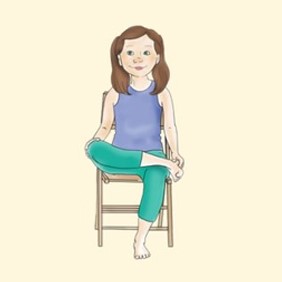
When you are continuously working on a system, you will feel some pain on knees.
Yoga: Sit in Tadasana. Flexing your right foot, cross your right ankle on top of your left thigh about an inch above your knee. Your right foot will remain flexed throughout your exercise. You may stay here, sitting upright with a long neutral spine; or, if you’d like to feel more of a stretch in your lower back and right hip, gradually fold forward over your legs.
Notice if this position causes any pain in your right knee. If you feel pain, experiment with lifting your right knee closer to your right shoulder, or adjusting the location of your right ankle on your left thigh forward or back. Stay for several breaths, observing sensations as they arise. You could imagine you are breathing into sensation, and notice if it shifts or changes as you stay. Repeat to the left.
Benefits: When you do Seated Kapotasana, you will get some relief from pain on knees.
6. Shoulder Rolls
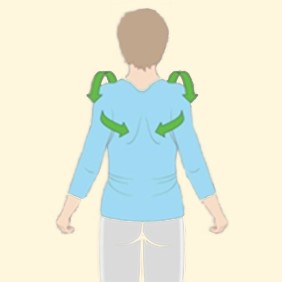
When you get some pain on your shoulder, while continuously working on a system leads to hypertension.
Yoga: Let the arms hang down at the sides of the body. Breathe in and lift the shoulders up toward the ears. Move the shoulders back, squeezing the shoulder blades together. Exhale and drop the shoulders back. Move the elbows forward, feeling the stretch at the back of the shoulders. Repeat this 10 times.
Benefits: This exercise softens and loosens shoulder girdle muscles and links movement to breath.
7. Cross-body shoulder stretch
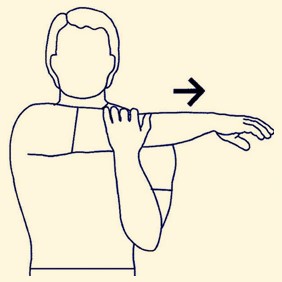
When you get some pain on your shoulder and your hands, while continuously working on a system leads to hypertension.
Yoga: Stand with the feet hip-width apart. Stretch the right arm out straight. Bring the right arm across the body, so that the hand points to the floor on the other side of the left leg. Bend the left arm at the elbow. Hook the left forearm under the right arm, supporting the right arm above the elbow. Use the left forearm to pull the right arm further in and across the body, stretching the back of the right shoulder. Hold this for 20 seconds, then repeat the stretch on the other side.
Benefits: It softens and loosens your shoulder and helps to release tension.
8. Neck stretches
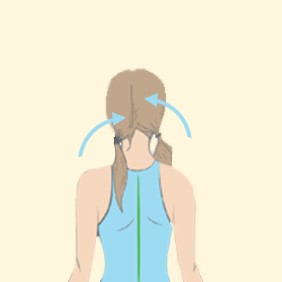
When you continuously look downward and focus on your system, it creates more impact on your neck.
Yoga: Look forward. Tip the head to the right, trying to touch the right ear to the right shoulder. Feel the stretch in the left side of the neck and shoulder. Tip the head to the left, trying to touch the left ear to the left shoulder. Feel the stretch in the right side of the neck and shoulder. Each time, hold the position for 10 seconds. Repeat this three times on each side.
Benefits: This exercise provides pain relief over neck.
9. Seated Crescent Moon Pose
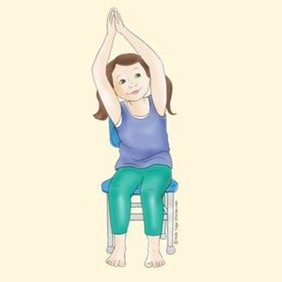
When you sit for a long time in a chair, your body gets too tight.
Yoga: Lift your arms overhead and stretch your fingers wide. Lean to the right, taking 2 to 3 deep breaths. Repeat on the left side for another 2 to 3 deep breaths.
Benefits: It Loosens your muscles on shoulder and hip.
10. Eagle arm stretch
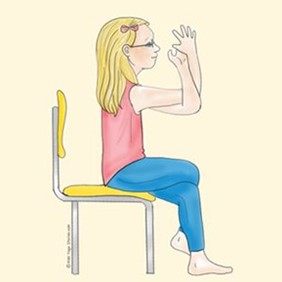
When you are continuously working on a system, you will feel some pain on shoulders.
Yoga: Stand with feet hip-width apart. Inhale and lift the arms to the sides. Exhale and swing the arms in toward the body. Allow the right arm to cross under the left. Cradle the left elbow in the crook of the right elbow. Bring the palms together if they reach. If the palms are not touching, hold the backs of the hands together. Take three or four deep breaths. Release the stretch and repeat it on the other side, with the left arm crossed under the right.
Benefits: It stabilizes and flexes your shoulder joint. It can help fight slumping over a laptop or keyboard.
Summary: These exercises will help you relief from pain through stretches. It also gives you more energy and enthusiasm in your work. These exercises are a great way to free the mind and improve concentration and focus. It can also create stress free environment which results in increased productivity.
Share this blog :










